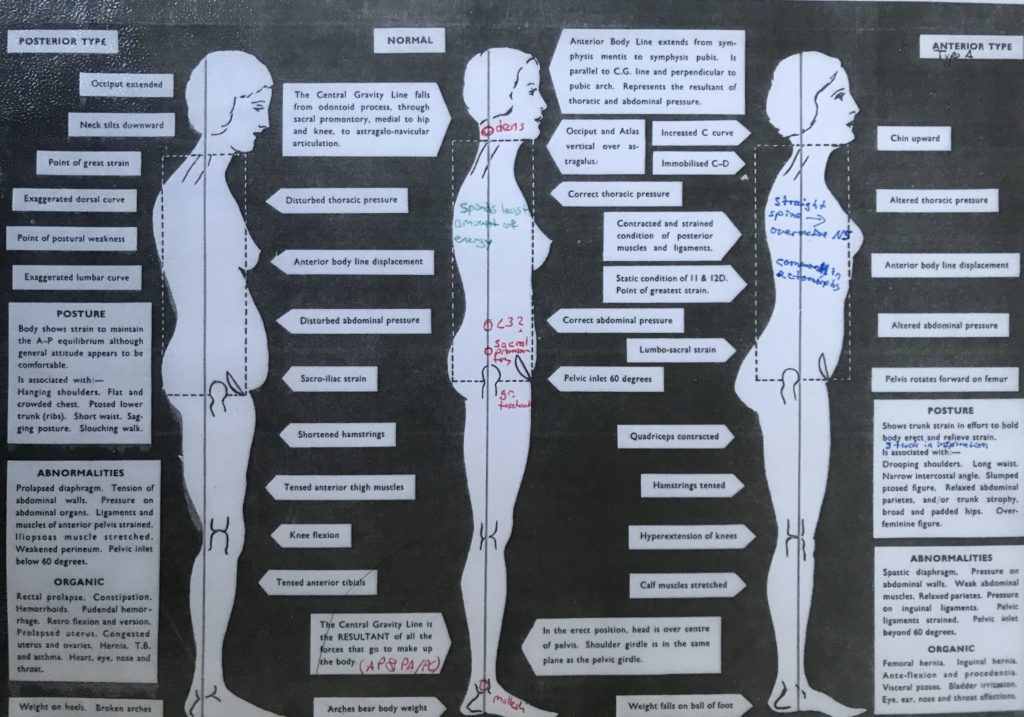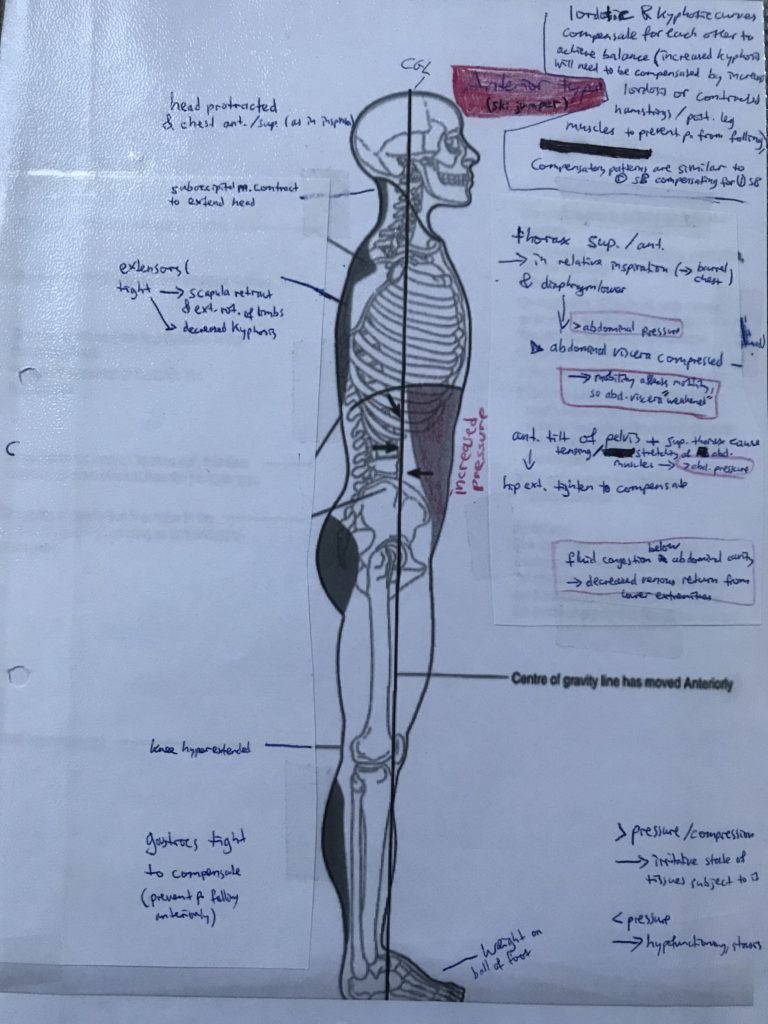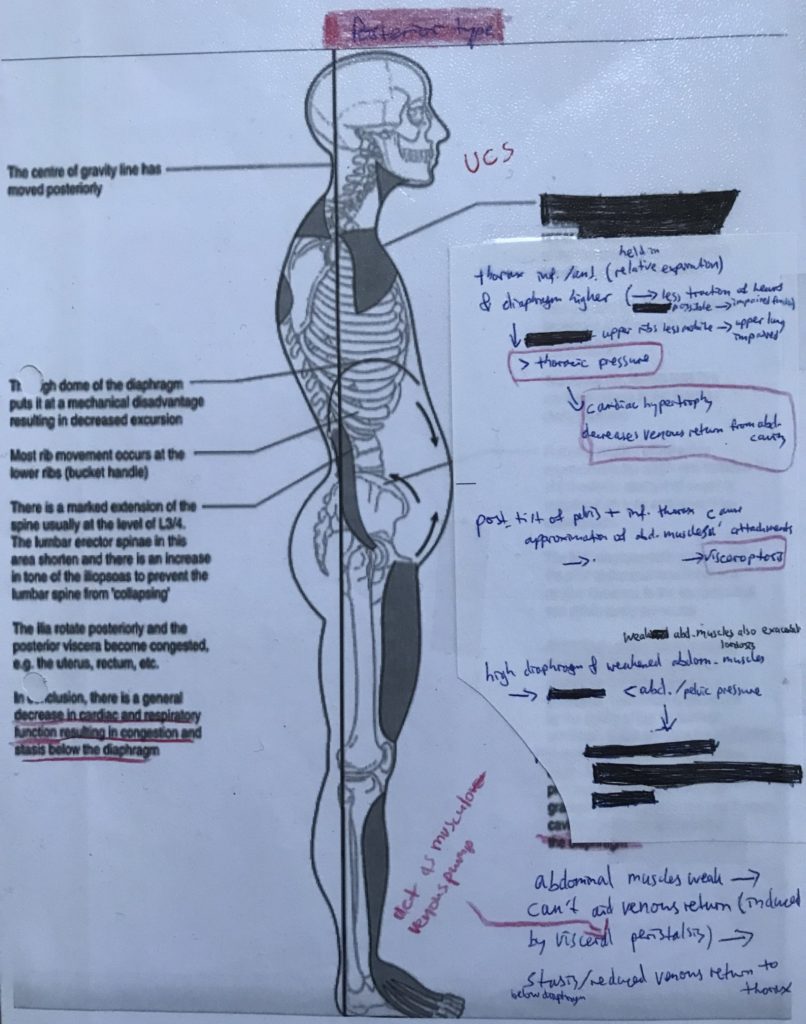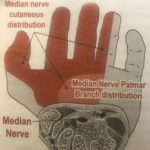
written by Laurie Melrose-Doering, Osteopath
In this blog post, I will explain the impact of poor posture on the different models, or lenses, through which osteopaths view the individual.
These models were discussed in a previous blog post and are as follows:
biomechanical, circulatory-respiratory, neurological, psychosocial, metabolic-energetic.
So, the typical posture associated with a sedentary lifestyle effects various aspects of the body. This is because repetition of a certain unnatural posture causes the body’s structure – its muscles and joints – to adapt. The altered structure leads to altered function, and the altered function may effect our health.
Anterior & Posterior: Two different types of posture
Osteopaths consider two different types of posture – an anterior type, where the centre of gravity line has moved anteriorly, and a posterior type, where the centre of gravity line (CGL) has moved posteriorly.
(Here are notes from my student days at the European School of Osteopathy. I could not find satisfying images on the internet, so I apologise that some of my writing is not easily readable. I must credit John Wernham, from whom the diagrams stem.)
Anterior type (with anterior pelvic tilt):

Posterior type (with upper crossed syndrome and posterior pelvic tilt):

Meanwhile, sedentary work often results in two main body positions:
1. anterior pelvic tilt
2. upper crossed syndrome (internally rotated and protracted shoulders)
An anterior pelvic tilt is associated with the anterior type of posture, while upper crossed syndrome is a posterior type.
Often individuals are a combination of anterior and posterior types, e.g. posterior in the upper half of the body, and anterior in the lower half.
This is because the body will try to compensate.
Upper crossed syndrome
Upper crossed syndrome is characterized by tight pectorals and neck extensors, and weak cervical flexors and adductors of the scapulae. This is inefficient and leads to increased energy expenditure, and, thus, fatigue. This is an example of the biomechanical model, and, one could argue, the metabolic-energetic model.
The postural imbalance and chest tightness effect the circulatory-respiratory aspect because they increase the thoracic cavity pressure and decrease rib mobility, which impacts the diaphragm and therefore efficient expansion of the lung.
Furthermore, stiffness around the cervico-dorsal junction and thoracic outlet compromise the cervico-thoracic diaphragm, which reduces optimal lymphatic flow.
Meanwhile, upper crossed syndrome may also impact the neurological aspect by impinging nerves arising from the brachial plexus. This is because of the associated protracted shoulders and pectorals tightness.
Recent research has shown that slouching decreases testosterone and increases cortisol. It can cause low confidence and exacerbate stress. This is evidence of the psychosocial and metabolic-energetic aspects in action.
Anterior pelvic tilt
An anterior pelvic tilt is usually due to tight hip flexors and weak gluteals, hamstrings, or abdominals. As with upper crossed syndrome, these muscle imbalances are inefficient.
Anterior pelvic tilt leads to increased abdomino-pelvic pressure (circulatory-respiratory). Functionally, this may lead to fluid congestion below the abdomino-pelvic cavity and decreased venous return from the lower extremities.
Anterior tilt of the pelvis may also have an impact on the metabolic-energetic aspect by compressing intestines. This may reduce optimal digestion and resorption.
As in previous blog posts, it becomes evident that the body functions as a unit. In other words, different areas and systems are highly connected. And this is something osteopaths take this into consideration during diagnosis and treatment.
Should I be worried if I don’t have the perfect posture?
Two things must be noted at this point. Firstly, none of these effects are pathological. They are all functional and must not alarm someone who has an anterior pelvic tilt, upper crossed syndrome, or any other pattern.
Secondly, a human with impeccable posture probably does not exist. There will always be an asymmetry or imbalance somewhere.
And this is nothing to worry about because our bodies are excellent at compensating. So if one of your knees is more hyperextended than the other, there is not necessarily a cause for alarm.
It is important to consider the functioning of the body as a whole. And if the body works well, this might just be your normal. Besides, many asymmetries come from minor injuries from activities that we undertake. And the alternative – doing nothing – is by no means advantageous.
And this brings us to another topic discussed in another blog post: Is sitting the new smoking?
To book an Osteopathy appointment in New Malden or in Marylebone, phone 020 8942 3148 or contact Aston Clinic London.
Aston Clinic London is a third-generation complementary health clinic based in New Malden and serves the local areas of Kingston, Wimbledon, Raynes Park, Surbiton, Chessington, Worcester Park, Sutton and other areas of southwest London and Surrey.
Aston Clinic London also offers Osteopathy and Herbal Medicine in Marylebone, Central London.

